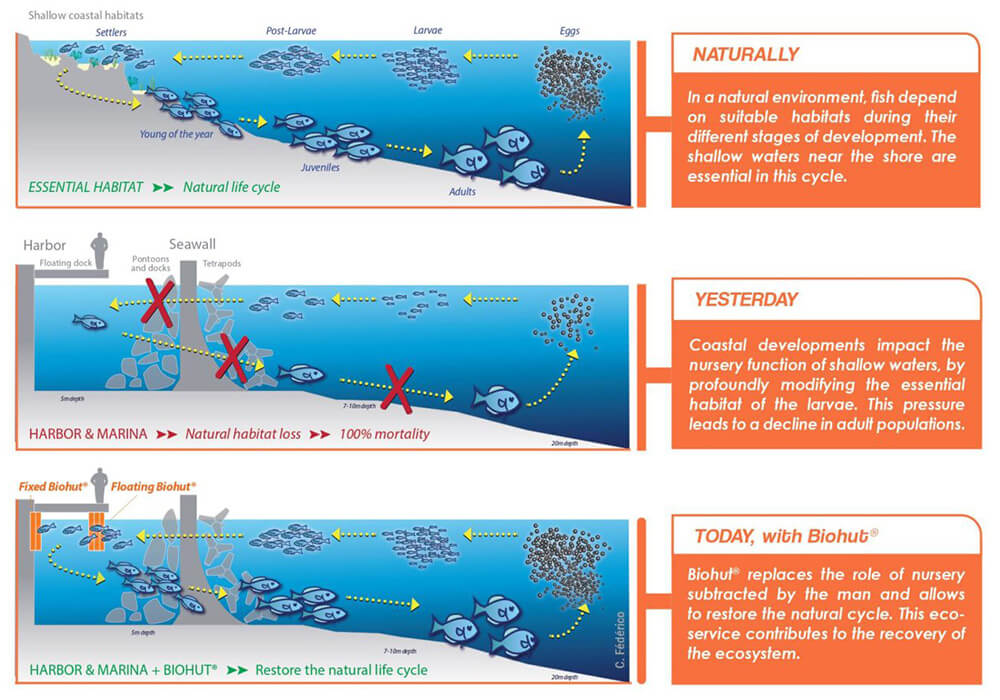Biodiversity
Aujourd’hui nous agissons pour contribuer au maintien de la biodiversité des écosystèmes marins
“If we continue like this, the sea will no longer look like anything”
An alarming message from Alexandre Joskowicz, Harbour Master at Port Camille Rayon: “We must all try to change our habits even if for some years now we have become aware of the efforts that still needs to be made to continue to improve the cleanliness of the water”.
“Conscious that we have taken advantage of and often devastated an exceptional nature for economic reasons, we can and must reverse the trend. Let us give back to the sea what it has already given us so much of. This is why we are launching a “fish nursery” project in the harbour. A process that will have the double advantage of putting the ecosystems back on track and supporting the economic activities that remain linked to the harbour.
Biodiversity huts to restore the natural cycle within harbors
When they return to their original habitat, some post-larvae will arive in the sheltered areas of the ports, wich seem, at first glance, to be adapted for their development. However, up to 100% of these post-larvae can disappear. Indeed, because of the straight design of the quay and an obvious lack of suitable habitat, the ports becomes a trap for these young fish who find themselves unprotected from predators.
The Biohut®
It is an artificial habitat, installed along quays and/or under pontoons. Composed of a steel cagefilled with oyster shells (food compartment), associated with an empty cage (protection compartment), it protects the post-larvae and the new recruits when, attacked by predators, they seek to get closer to the habitat.
The Biohut® process aims to restore the natural cycle. Once equipped, the quays and pontoons become shelters for many aquatic species. They are then more likely to survive and contribute to the growth of adult populations.
While it represents less than 1% of the total ocean surface, the Mediterranean Sea accounts for nearly 7% of the world’s marine fish species. The western part of the Mediterranean (including the Gulf of Lion) is one of the most diversified areas with nearly 350 species of fish. However, this biodiversity is threatened by pollution but also by coastal developments that reduce available habitats. That is why we must act today to maintain this richness and preserve our future fish population.


Opération de restauration écologique des fonctions de nurserie : Rapport d’activité intermédiaire – Années 2020-2024 (pdf)
Little story of a big life cycle…
Depending on the species, female fish are able to lay as many as one million eggs. The fertilized eggs drift off the coast through currents before hatching occurs. The first larvaes become then part of the plankton and are able to colonize new territories. A few weeks later, according to the timeline of each species, they leave oceanic waters and come back to their original habitat. At this point, they are now called post-larvae. These post-larvae are so vulnerable that more than 95% will die the week after the colonization phase of the habitat, due to predation. At the end, only few post-larvae will achieve their settlement and only one will reach the adult stage, being then able to contribute to the reproduction of its species. The post-larvae phase is a crucial step of the life cycle as its good functionning contributes to the augmentation of fish stocks.
Alexandre Joskowicz 38 years old young main
Harbor master of Port Camille Rayon in Golfe Juan, explains his vision but also his commitment to biodiversity.
